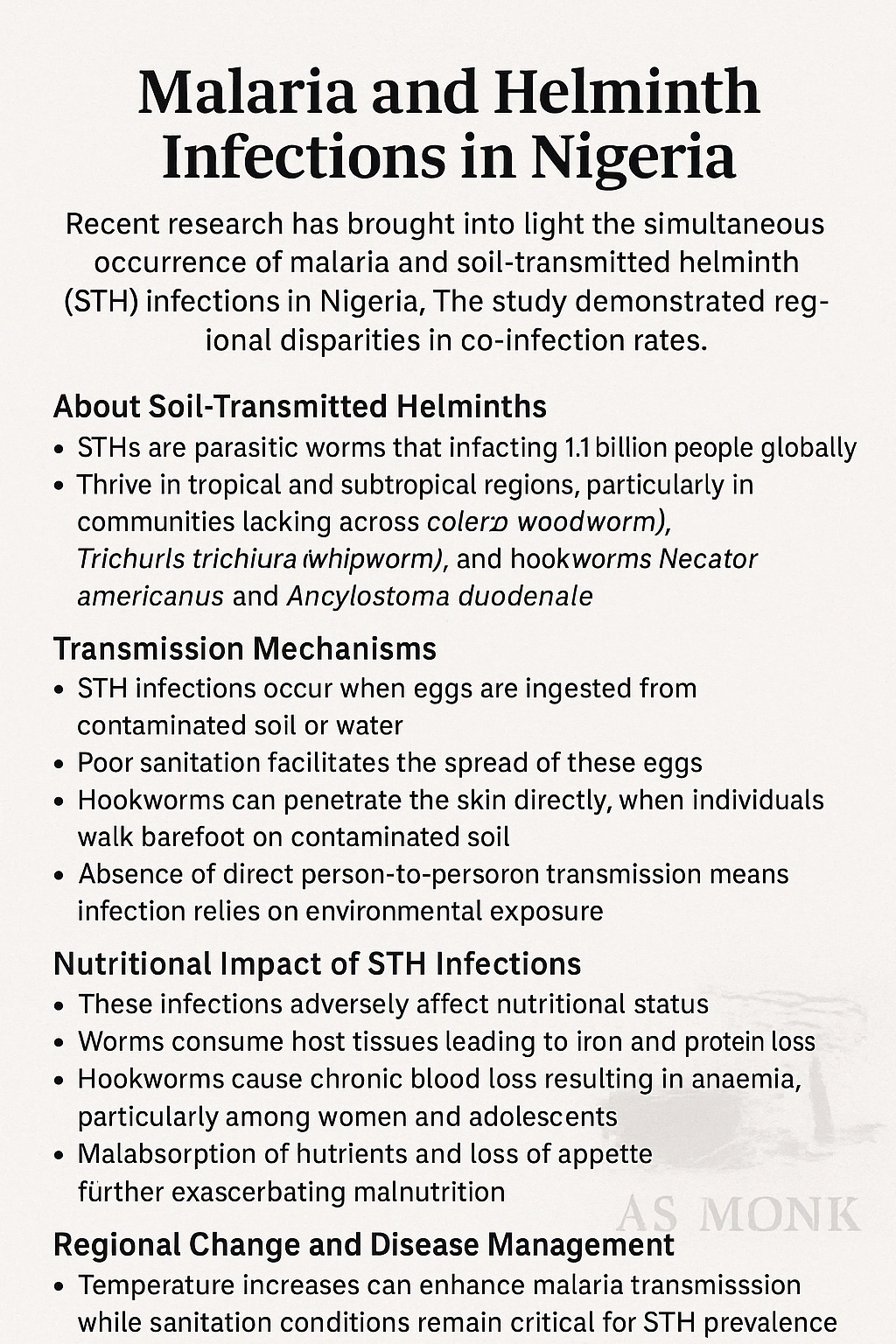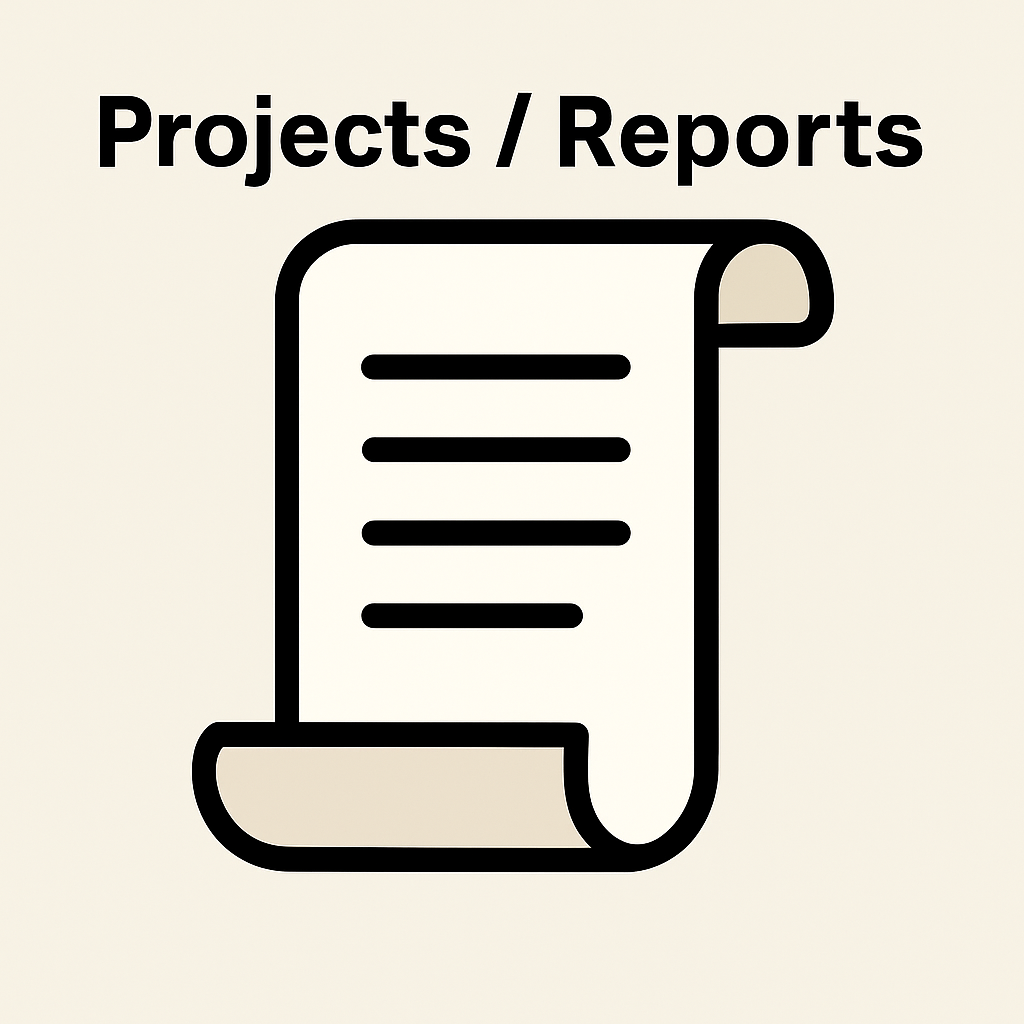
009 – Apr 8, 2025 🦠
Worms and Mosquitoes: Nigeria’s Twin Burden of Malaria and Helminth Infections

🧭 Thematic Focus
Category: Public Health | Disease Ecology | Regional Disparities
GS Paper: GS Paper II – Health and Governance | GS Paper III – Climate Change & Ecology
Tagline: Where water is unclean and soil unsheltered, infection walks with the barefooted.
🌍 Intro
A new study from Nigeria, led by Faith Eshofonie of the Federal University of Technology, has shed light on the co-infection of malaria and soil-transmitted helminths (STHs).
With regional disparities and climate sensitivities, the findings call for integrated health strategies that combine hygiene, education, and equitable care.
🔍 Key Highlights
🪱 What Are Soil-Transmitted Helminths (STHs)?
- Parasitic worms infecting ~1.5 billion globally
- Thrive in tropical, poor sanitation zones
- Major species:
- Ascaris lumbricoides (roundworm)
- Trichuris trichiura (whipworm)
- Hookworms (Necator americanus, Ancylostoma duodenale)
- Spread via contaminated soil/feces
- Hookworms can penetrate skin
🚶 Transmission Pathways
- Eggs ingested from contaminated water or soil
- Walking barefoot → hookworm entry through skin
- Not directly transmitted person-to-person
- Depends on environmental hygiene
🧬 Impact on Nutrition
- Worms consume blood, tissues, and nutrients
- Leads to:
- Iron and protein deficiency
- Chronic blood loss (anaemia)
- Stunted growth, appetite loss
- Affects women, children, adolescents most
⚕️ Symptoms & Complications
- Light infections = asymptomatic
- Heavy infections →
- Abdominal pain
- Diarrhoea
- Intestinal blockage
- S. stercoralis dangerous in immunocompromised people
📊 Nigeria’s Regional Patterns
- Malaria: Most prevalent in northwest & north-central
- STHs: Higher in southwest
- South-south & southeast = highest co-infection rates
- Climate factors influence parasite survival
🌍 Climate and Disease
- Warming temperatures → more malaria transmission
- Poor sanitation = persistent STH threat
- Urges climate-sensitive health strategies
- Calls for integrated disease control combining environment & education
🧑⚕️ WHO Strategy for Control
- Preventive chemotherapy for at-risk groups
- Children, women of reproductive age, rural workers
- Regular deworming
- Focus on:
- Health education
- Improved sanitation
- Screening and mapping
🧠 Concept Explainer: Why This Matters
Disease doesn’t arrive in isolation.
One infection worsens another. One weakness compounds the next.
The Nigerian case underscores the need for holistic health governance, tuned to climate, culture, and soil beneath our feet.
🗺️ GS Paper Mapping
- GS Paper II – Health Inequalities, Public Systems, WHO Policies
- GS Paper III – Environmental Determinants of Disease | Climate Health Nexus
- Essay Themes – “Walking the Line of Poverty and Parasites,” “Health in the Time of Climate”
💭 A Thought Spark — by IAS Monk
“In the silence of stagnant water
and the hush of soil too poor to speak,
the body becomes a battleground—
and still, healing begins with awareness.”


















